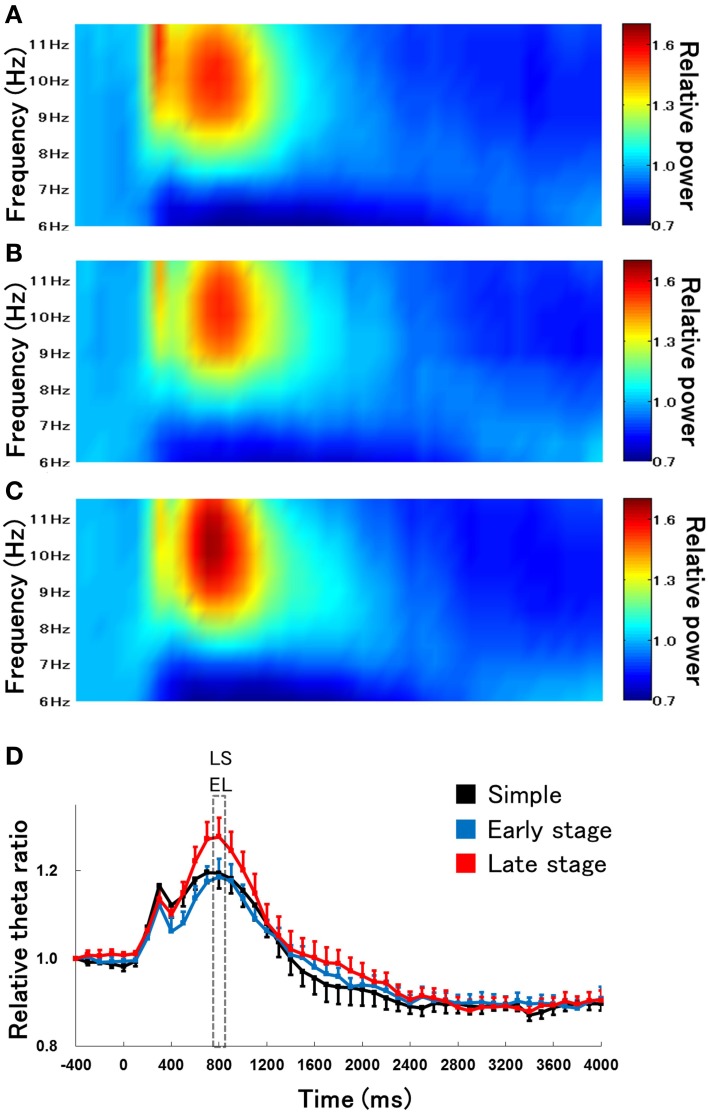Figure 4.
The relative change in hippocampal theta power during RFTs during the retention test for the simple discrimination task (A), the early learning stage (B), and late learning stage (C) of the FN task. The 0-ms period indicates the onset of stimulus presentation. The x-axis represents time (ms), and the y-axis represents frequency (Hz) in panels (A–C). The period was divided into 45 sub-periods of 100 ms each. The mean hippocampal theta power from 500 to 400 ms before stimulus onset was counted as the −400-ms period (no stimuli were present and no rats pressed the lever during this period), and the relative theta power calculated for each period was normalized to that of the −400-ms period (relative theta power of each period = theta power of each period/theta power at the −400-ms period). Panel (D) depicts the mean hippocampal theta power between 6 and 12 Hz (Simple: simple discrimination task; Early stage: early learning stage of the FN task; Late stage: late learning stage of the FN task). The “ES” indicates a significant difference between the early learning stage of the FN task and the retention test for the simple discrimination task (ES: p < 0.05), the “EL” indicates a significant difference between the early learning stage and the late learning stage of the FN task (EL: p < 0.05), and the “LS” indicates a significant difference between the late learning stage of the FN task and the retention test for the simple discrimination task (LS: p < 0.05). Error bars indicate s.e.m.

